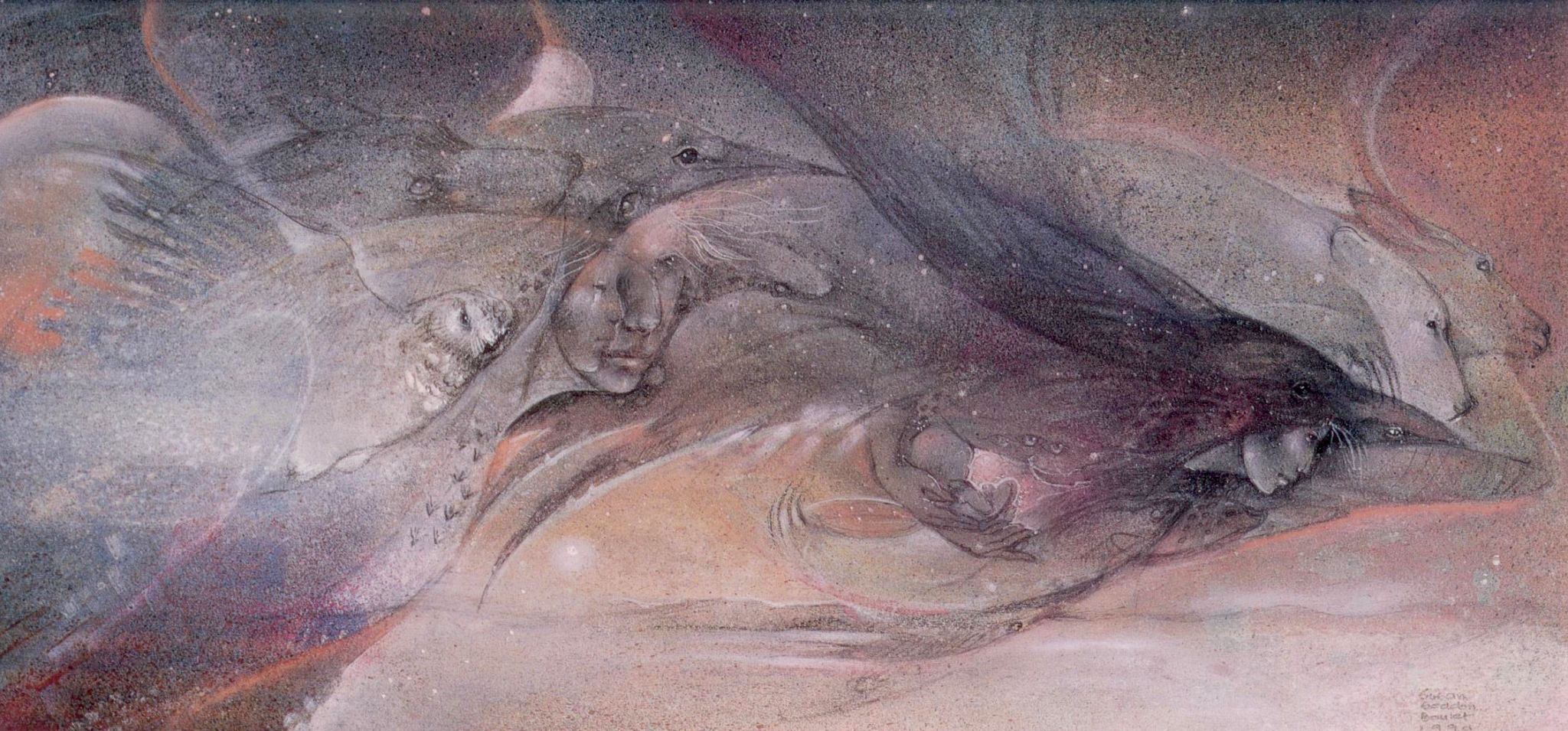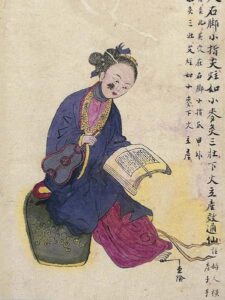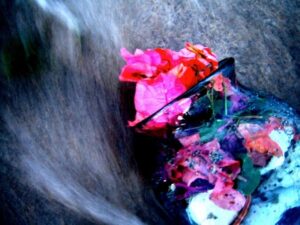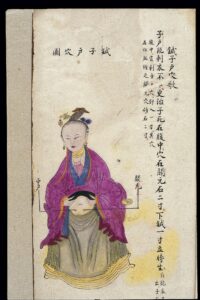Què Yīn 雀阴 ‘Night Bird’ ~ Seeking, Craving and Elation
Wait, how can excess joy create problems! I mean, we all want to be happy, right? Thats the whole point?
It is easy to understand grief, oppression, depression or anger as purely negative and obvious in the ways they incur detiment to the spirit.
But joy, to incur injury to the spirit? Is that not the pure good of existence, what we all strive to attain?
If this type of thinking strikes a cord, well yes, seeing emotions as good or bad is the beginning of disconnection. All states carry their unique wisdom, just as all states of weather are integral to a healthy ecosystem. We could say that excess joy is akin to a long, hot and sunny spring without rain, that over time will increase the liklihood of wildfires.
We will discuss further that joy and elation have two distinct aspects, with completely different treatment protocols.
To be under the influence of 雀阴 Què Yīn the ‘Night Bird’ was to move as an incubus or succubus does. This influence is congruent with any addictive behaviour, hedonistic and excitatory pleasure seeking. To become completely enraptured with a singular focus on elation. My teacher likened this influence to a ‘party animal.’ This singular obsession leads to a sort of ‘heat’ overtime which can present as irritation, lack of patience, vacancy and obsessive striving. To be under the influence of the Night Bird is to be obsessed with the state of joy and to chase the dragon endlessly for its’ fire.
In Traditional Chinese Medicine there are two aspects of ‘joy’ or ‘elation.’ This is an interesting part of Traditional Chinese Medicine ‘Psychology’:
There is ‘elation’: xǐ 喜 which was understood as music heard at popular feasts. Excitement and stimulation given by the beating of a drum which creates powerful responses in the blood and Qi (Pg. 95: The Seven Emotions, Claude Larre et al.). This exciting state is what I meant by the long sunny springs creating a perfect environment for summer wildfires: in the sense that chronic propensity for existing purely in an excitatory state leads to excess. Like a wildfire, excess rapidly burns through bodily resources, it is a high energy state. Very simply put one may be easily exicted and high energy (Though this is a generalization, not a diagnosis.).
My teacher exclaims this state as “Its fun to be with people, having a larp with your chums and it feels great to be together.” Theres nothing wrong with having fun with friends! Like all emotions, being stuck in a chronic state and/or a defualt mode; creates a narrowness in experiencing life. A balanced approach could be finding time in life to find joy in friendship as well as deep satisfaction with self which is not dependent on others or circumstance.
In terms of elation, the Qi is too activated: the spirit becomes scattered and unanchored. This generates a metabolism that runs rampent, to keep up with energy expenditure. With time, the self will experience a loss of self through the dispersal of Qi. This is how excess elation 喜 (This is the same character people will translate as happiness), will overtime lead to pathology because the self becomes so scattered that self is lost.
Manifesting as boundary issues and being without a sense of where one begins and the other ends; where someone else’s motivation can feel personal or intrinsic. Transference of emotions is easy when one’s sense of self is scattered and these individuals are highly susceptible to, as we say in TCM: cursed by other’s wind. It can be difficult, confusing and chaotic to be so scattered, and one may fall into the belief that other’s are to blame for one’s own situation. Underlying this chronic propensity may be a deep disatisfaction with self, and fostering such is the salve.
There may also be a deficiency in the nutritive level of the blood, on tests this may show up as anemia: find your favorite liver pate recipe and source organic, local livers if possible! Emptyness in the nutritive level of the blood is the sense of being loved and can crop up as discomforts with intimacy (with self and others, ie. An aversion to personal boredom).
Nourishing the heart through diet and practice is a must in cases such as these. Or even if one notices a tendancy to seek excitation. Joy is an important part of existence, yet careful to be able to experiance aliveness through a myriad of shades, where chronic propensities with joy become pathological is through the inability to stop, to be unable/unwilling to experience the world any other way. Find a way to satisfy your needs, to fill your own cup and then from there be able to fill other’s cups.
Self-satisfaction and happiness are difficult in the individual with porous internal boundaries if their sense of happiness is contingent on making others happy. Behind such behaviours lurk needs that are not being met: compassion, acknowledgement.
The heart is implicated strongly in this state, and overtime the lungs will be compromised; one will have palpitations. These may not show up as problomatic or existent on any electric scans. Being anchored in self is important here, where elation moves us to the exterior reaches of being, being able to simulteanously be anchored in self creates a balanced manifestation of joy and happiness.
In it’s natural expression, Joy as a state loosens the Qi and is said to be an unbuckling of a belt, so it is a lovely state of being and necessary! What I am speaking about is too much opening, which is a slackness of the Qi and dissapates the quality of one’s energy, creating a porous body system.
‘Joy’ or lè 樂 is strongly linked to music: the character shows a large drum with bells or chimes on either side. This is a drum that would be large and suspended in temples, not the same kind as xǐ and the drums used for feasts (Pg. 95: The Seven Emotions, Claude Larre et al.). Lè is not a state of excitation, it is a deep oneness with the world and sense of self-satisfaction: to stand in yourself and feel ‘right’ in the world. A way of being in the world where you find satisfaction for the circumstances you find yourself in.
This state is not usually associated as being one of the seven emotions, because it is the joy of heaven, the deep harmony and unity of life where all the component parts play together well under the mastership of the heart which acts as a conductor (Pg. 97, The Seven Emotions: Claude Larre et al.). The heartbeat is said to be the rhythm of the Zang Qi, which refers to the organs considered to be “solid” in nature: The Heart, Liver, Spleen, Lung, Kidney. To be content in the time and space you find yourself, to feel at ease in your own skin is perhaps the deep satisfaction worth investing in.
Pt. 2: On elation, joy and the deep satisfaction of oneness (lè 樂)
I wanted to focus more on the mention of ‘Joy’ I made.
In Part One I spoke about the scattering effect of Elation (also translated as joy or happiness). I agree with Kevin Wallbridge that ‘its fun to be with friends’, unbuckle your Qi and experience togetherness. This is the idea of elation (xǐ 喜) in it’s positive expression and experience. I was referencing the tunnel vision I have, and I am sure many of us can relate to: the negative expression of endlessly seeking elation; this can manifest as addictions which have endless manifestations. Scattered seeking leaves little room or energy for building, gathering or growing.
Do you find yourself fragmented? Chasing a state, yet never satisfied deep down?
Joy, or lè 樂 can be translated as the deep satisfaction of oneness. This idea of joy outlines that our physicality affects how we feel about ourselves. So, we may liken this state to being purely in the moment, as the moment and for the moment. Regardless of circumstance, past or future. Melting into oneness, as the breeze caresses the landscape. Embodiment is a hot topic these days, and I understand this is a facet providing it’s potency: an active relationship and oneness to time, space and environment.
When one has a lack of this, it can appear as insecurity; feeling unworthy or not belonging. The feelings associated with such a state may become ingrained or mistaken for self, and there is work to be done in teasing apart what is self and what is condition.
To sum it up, do you find satisfaction within the place and stage you find yourself, right now, in life?
Art by Susan Seddon Boulet




